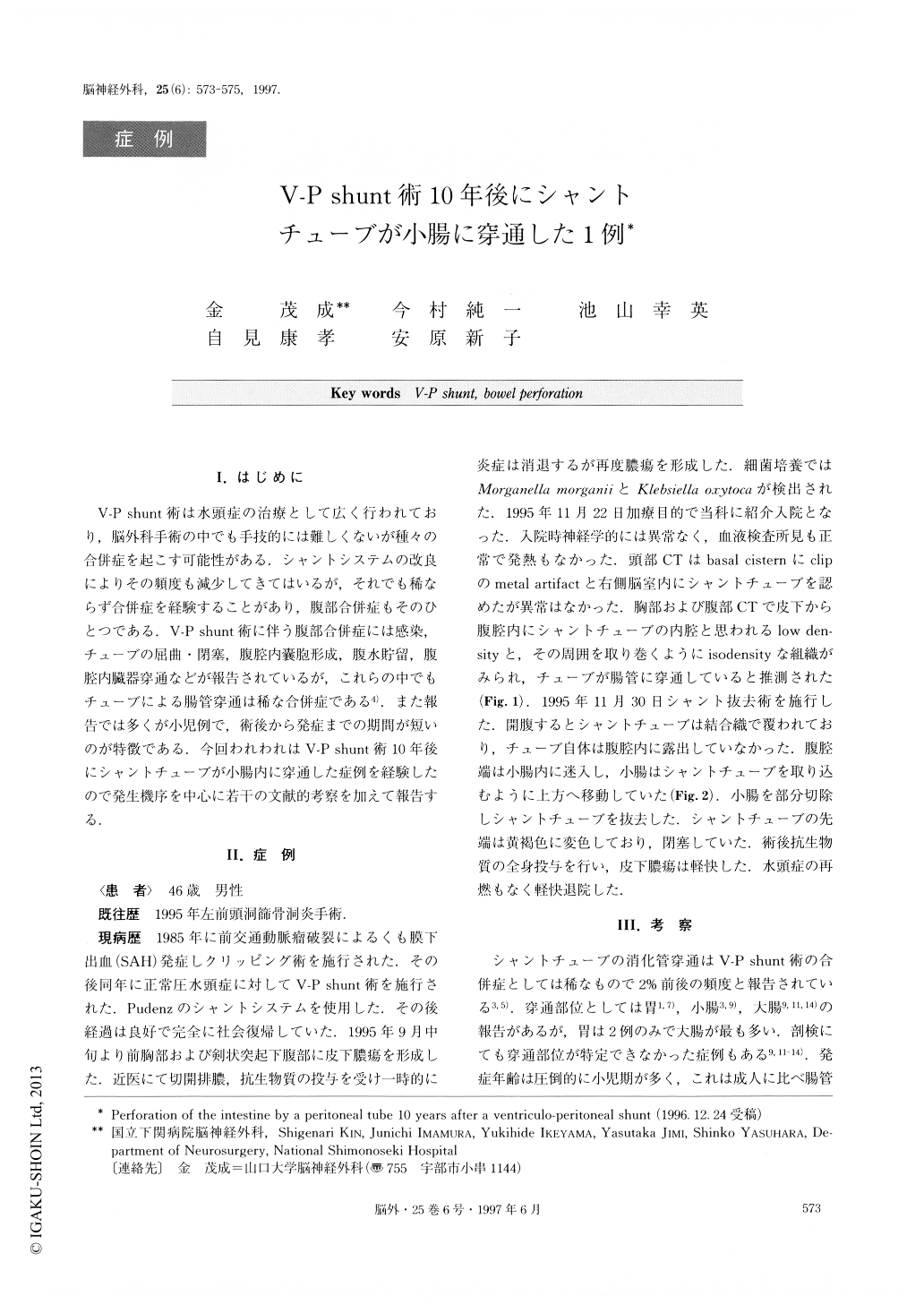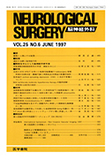Japanese
English
- 有料閲覧
- Abstract 文献概要
- 1ページ目 Look Inside
I.はじめに
V-P shunt術は水頭症の治療として広く行われており,脳外科手術の中でも手技的には難しくないが種々の合併症を起こす可能性がある.シャントシステムの改良によりその頻度も減少してきてはいるが,それでも稀ならず合併症を経験することがあり,腹部合併症もそのひとつである.V-P shunt術に伴う腹部合併症には感染,チューブの屈曲・閉塞,腹腔内嚢胞形成,腹水貯留,腹腔内臓器穿通などが報告されているが,これらの中でもチューブによる腸管穿通は稀な合併症である4).また報告では多くが小児例で,術後から発症までの期間が短いのが特徴である.今回われわれはV-P shunt術10年後にシャントチューブが小腸内に穿通した症例を経験したので発生機序を中心に若干の文献的考察を加えて報告する.
A case is reported of intestinal perforation by a ven-triculoperitoneal shunt (V-P shunt) tube 10 years after V-P shunt. A 49-year-old male received V-P shunt for normal pressure hydrocephalus following subarachnoid hemorrhage. Ten years later he was admitted to our de-partment with an abscess on the anterior chest and on the abdominal wall along the shunt tube. When CT scan revealed that the peritoneal tube had perforated the bowel, the shunt was removed. During the opera-tion it was found that the peritoneal tube was wrapped with fibrous tissue and that it had perforated the intes-tine. The subcutaneous abscess healed after the patient received systemic antibiotics. He was discharged and returned to work.
We discussed the mechanism of bowel perforation in this case. It is assumed that bowel perforation occurred because of continuous friction at the same site of the bowel wall after the peritoneal tube received fibrous encasement in the abdominal cavity. Bowel perforation was diagnosed ten years after the V-P shunt in this case. To our knowledge, this is the longest period amongst reported cases.

Copyright © 1997, Igaku-Shoin Ltd. All rights reserved.


